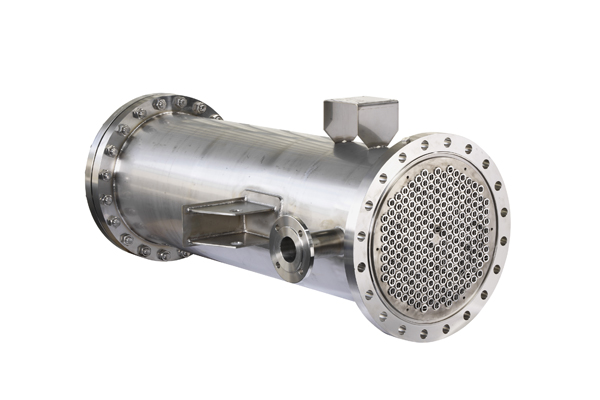A shell and tube heat exchanger is a type of heat exchanger that consists of a cylindrical shell (also known as a housing) and a bundle of tubes inside it. It is designed to facilitate efficient heat transfer between two fluids while keeping them physically separated.
The shell is a large, robust vessel that encloses the tube bundle. The shell also has inlet and outlet ports for the entry and exit of the fluids.
The tube bundle is composed of multiple tubes, which are usually made of materials that provide good thermal conductivity, such as stainless steel, Titanium, Hastelloy, Inconel, Monel, Nickel 200, Duplex, Super Duplex, Cu-Ni alloys. The tubes can be arranged in various configurations, including parallel, U-shaped, or helical designs. The choice of tube arrangement depends on factors such as the desired heat transfer efficiency, flow rates, and space limitations.
One fluid, often referred to as the process fluid or the primary fluid, flows through the tubes. This fluid can be either a gas or a liquid and can be hot or cold depending on the specific application. The other fluid, known as the service fluid or the secondary fluid, flows through the shell surrounding the tube bundle. This fluid is typically used to either heat up or cool down the process fluid, depending on the heat exchange requirements.

During operation, the two fluids pass on opposite sides of the tube walls, creating a temperature gradient. Heat is transferred from the hotter fluid (process fluid) to the colder fluid (service fluid) through the tube walls via conduction. The large surface area provided by the numerous tubes facilitates efficient heat transfer between the two fluids.
Shell and tube heat exchangers are widely used in various industries due to their versatility, reliability, and efficiency. They are commonly found in applications such as power generation, chemical processing, oil refining, HVAC systems, refrigeration, and many other thermal processes.
BENEFITS OF USING PURNIMA ENGINEERING WORKS’S HEAT EXCHANGER:-
A. PEW s heat exchangers enable effective heat transmission, maximizing energy efficiency and lowering energy expenses. The heat exchanger is designed with high-quality materials, including stainless steel, to provide long-term durability and wear resistance.
B. PEW’s heat exchangers may be adjusted to various applications and operating conditions to ensure that the customers receive a solution that meets their requirements.
C. The heat exchanger is easy to maintain and helps reduce downtime and maintenance expenses.
D. PEWl’s heat exchangers are built keeping in mind the safety standards with features such as pressure and temperature sensors to avoid overloading or overheating.
E. The heat exchangers can be installed even in contact spaces, reducing the system’s overall footprint.






